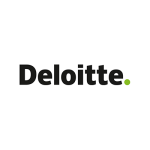The digitalisation of tax has been a hot topic for the last two decades at least, and the COVID-19 pandemic has greatly increased the need for it, catalysing its development.
Indeed, the pandemic has highlighted some companies’ difficulties in meeting their reporting obligations remotely, due to problems with accessing data or a lack of available technology to monitor the entire reporting process.
But these are not the only challenges facing the business community. In a study conducted during the pandemic and published in May 2021, Deloitte questioned various stakeholders about their company’s key reasons for considering indirect tax digital transformation.
The main motivations were:
A significant increase in the volume and complexity of transactions;
Rapidly changing tax and VAT landscapes, including tax authorities also going digital; and
Internal tax professionals expected to provide more value and strategic insight to the business, while the size of internal tax departments tends to be contained or reduced.
These factors heap increasing pressure on data management and human resources. Internal tax specialists can no longer afford to spend hours processing data to ensure compliance; instead, they must rapidly digest the data and provide high-quality insights to tackle any risk or opportunity along the VAT management value chain.
The challenge grows even more critical when tax authorities require granular or quasi real-time reporting, or require taxpayers to provide ‘SAF-T’ files to help automate and ease their VAT audits.
These obligations imply that taxpayers must move from a post-reporting to a pre-reporting review position.
Data creation, ongoing management, and control have become absolutely critical elements for the success of not only the entire VAT but also the business data cycle. VAT is a transactional tax – the data used for indirect tax reporting is the same data used by the business, so they must go hand in hand.
Given the vast amounts of data that must be analysed and validated, stakeholders need a high level of automation in their data management. This requires powerful and reliable technology.
An ideal starting point for this automation is aligning accounting and enterprise resource planning (ERP) software with VAT requirements through the enhanced use of tax codes or specific VAT accounts. This allows the production of VAT-aligned reports and invoices.
Because selecting the correct tax code is critical, deeper automation is recommended. This can be achieved, for example, by harnessing an additional tax engine or intermediate process that uses tax determination logic to automate tax code determination.
But even the most efficient ERP systems do not always allow the quick and easy bridging of accounting data with tax and VAT returns. To fill this automation gap, a growing number of companies are embedding optical character recognition (OCR), extract, transform, and load (ETL), and robotic process automation (RPA) into their VAT-management processes. However, this requires companies to place indirect tax on project teams’ radars as early as possible, ideally at the blueprint stage.
Finally, achieving the aim of providing strategic and value-added input to the business teams requires companies to not only obtain the correct data but also be able to gather and analyse it.
For internal tax specialists to achieve this goal, considering the massive amount of data generated even by small and medium-sized enterprises, investing in data analytics or business intelligence technology becomes almost a must. As a result, the use of machine learning and cognitive technology even for tax purposes is currently growing.
All in all, technology can be used in virtually every step of VAT affairs management, helping:
Minimise possible human error, especially when periodically processing large amounts of important data;
Ensure proper audit trails and reconciliation before reporting;
Facilitate data and information retrieval for past periods, even when certain employees are no longer with the company, which can cause difficulty with tax audits in particular;
Ease possible outsourcing, notably of VAT compliance, to provide a clear and standardized set of data easily interfaced with third-party provider systems; and
Provide valuable insight to the business teams, where tax teams can use VAT-structured transactional data to add value to the entire business.
However, there is no magic wand – the result will only be as good as the quality of its initial development.
Technology will not replace actual tax specialists; instead, it takes on the pure data processing burden, allowing tax specialists to focus on the real tax and business work. This is the ‘power of with’: achieving the best results of humans working with machines.
Cédric Tussiot
Partner, Deloitte
Antoine Farioli
Director, Deloitte
Stéphanie Porzio
Senior manager, Deloitte












